#pc-nikkor 28mm f/4
Text
Adobe camera raw cs4 download mac

Adobe camera raw cs4 download mac for mac#
Adobe camera raw cs4 download mac update#
Adobe camera raw cs4 download mac full#
Adobe camera raw cs4 download mac update#
Adobe Camera Raw runs on the following operating systems: Windows/Mac. The most current update of Adobe Camera Raw for Photoshop CS6 is 9.1.1 Photoshop CS5 (April 30, 2010) The most current version for Photoshop CS5 is 12.0.4 or 12.1 The most current version of Adobe Camera Raw for Photoshop CS5 is 6.7.1 Photoshop CS4 (October 15, 2008) The most current update for Photoshop CS4 is 11.0. It was initially added to our database on. The latest version of Adobe Camera Raw is 14.5, released on. (*) Lens corrections for the SIGMA dp1, dp2,and dp3 Quattro cameras are for JPEG images only.Host file block website list download. Adobe Camera Raw is a Freeware software in the category Graphics Applications developed by Adobe Systems Inc. Adobe has released an update to its Camera Raw Plug-in for Photoshop CS4. ZY Optics Mitakon Speedmaster 50mm f0.95 Pro 1 Photoshop CS4 (October 15, 2008) The most current update for Photoshop CS4 is 11. TAMRON SP 90mm F/2.8 Di MACRO 1:1 USD F004S Voigtlander SL II 28mm f/2.8 Color-Skopar Aspherical Voigtlander SL II 20mm f/3.5 Color-Skopar Aspherical Nikon AF-S DX NIKKOR 55-200mm f/4-5.6G ED VR II Voigtlander MFT 17.5mm f/0.95 Nokton Aspherical Voigtlander LTM 35mm f/1.7 Ultron Aspherical they should hit Adobe CS3, CS4 and CS5 first. Voigtlander LTM 28mm f/1.9 Ultron Aspherical Mac CS3 is no longer supported for Adobe Camera Raw and DNG Converter. Venus Optics 60mm f2.8 2X Ultra-Macro Lens
Adobe camera raw cs4 download mac for mac#
and the standard version for Mac and PC is currently available to download for free.
Adobe camera raw cs4 download mac full#
Adobe Animate CC provides more expressive tools, powerful. Direct integration with Bridge File renaming Full auto renumbering. You can view (in fullscreen) and manage Photoshop PSD, Camera RAW, Illustrator AI. Students can follow the book from start to finish or choose only those lessons that interest them.
Panasonic Lumix DMC-ZS50 (DMC-TZ70, DMC-TZ71) Block Adobe Activation Servers for CS4 and CS5 via HOSTS file.
To see the new Merge feature in action, check out these videos. Because of this, you no longer need to edit your photos before merging. If you are merging raw files, then the merge is performed using raw image data and the resulting DNG is just as much a raw file as the originals (and retains all the editing flexibility that comes with shooting raw). The merged result is a DNG file and is saved to disk alongside the input images. You can download the appropriate files from links below.ĭownload Camera Raw 9 for Photoshop CC/2014Ĭombine your photos to produce panoramas and HDR images in ACR. Update for Photoshop CC also includes the new features listed below. Camera Raw for Photoshop CS6 only include new camera support, lens profile support, and bug fixes. Links to the latest Adobe DNG Converters: DNG Converter for Mac and Windows.

0 notes
Photo
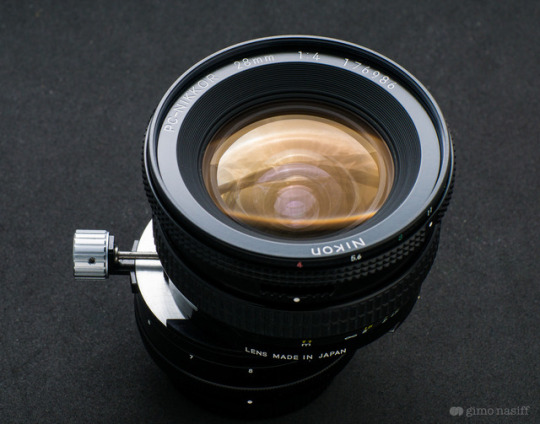
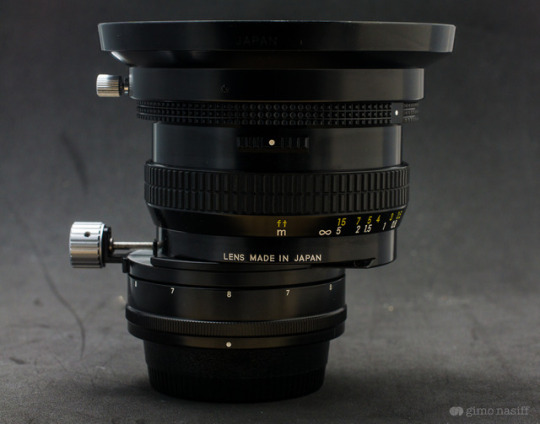
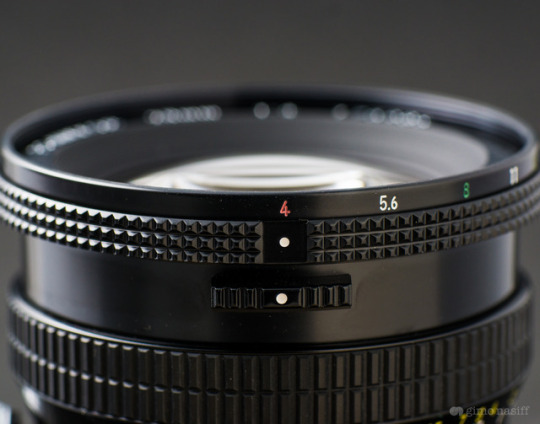

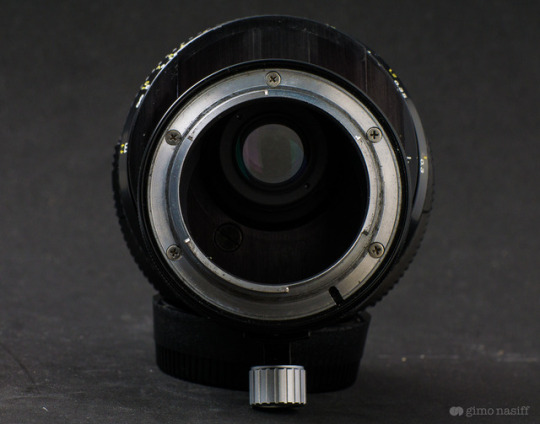
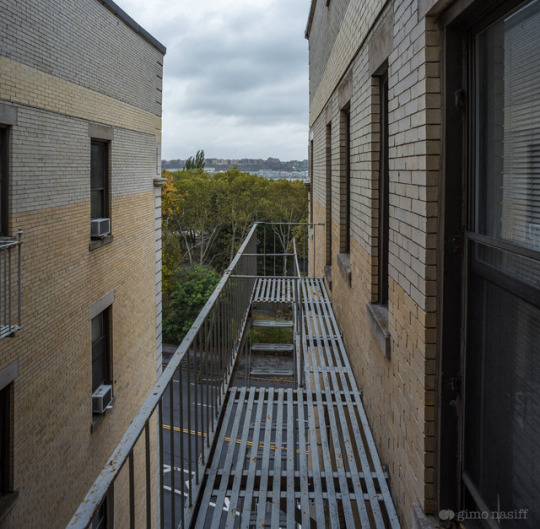

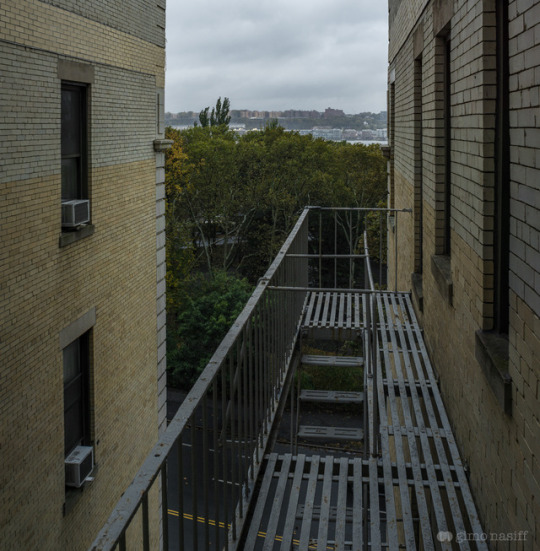
Testing shift performance of PC-Nikkor 28mm f/4.
All sample images made out of three shots each and stitched together on Lightroom.
-Canon 5D MkIII - 1/60 sec, ISO 400, f/11
-Sony a6000 with Zhongyi Mitakon focal reducer II - 1/250, ISO 160, f/11
-Sony a6000 with simple adapter at f/11 - 1/100, ISO 160, f/11
6 notes
·
View notes
Photo
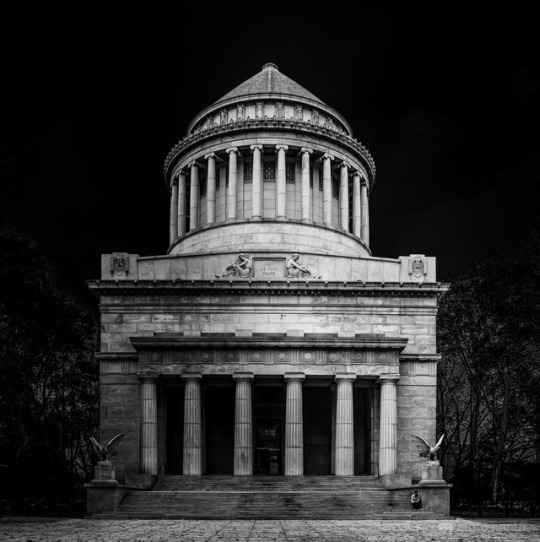
General Grant National Memorial.
Working on a fine art photography project.
Using only vintage manual lenses.
#vintage lenses#manual lenses#grants tumb#morningside heights#monochrome#grayscale#greyscale#pc-nikkor 28mm f/4#gimo#nasiff#photograph#riverside drive#memorial#national#columns#architecture#sony a6000
0 notes
Photo

Used Nikon PC-Nikkor 28mm f/4 Wide Angle Shift Lens (EX-) (625290911)

Used Nikon PC-Nikkor 28mm f/4 Wide Angle Shift Lens
PLEASE CALL USED ONLINE SALES AT 512/467-7676 OR EMAIL US AT [email protected] FOR MORE INFORMATION ON ANY PARTICULAR PRODUCT.
Everything we sell used comes with..
Price: $274.99
https://ift.tt/3rXwyvI April 07, 2021 at 04:28AM
0 notes
Photo

Nikon F3 | PC-Nikkor 28mm f/4 | Kodak Portra 400
#Kodak#Kodak Portra 400#Nikon#Nikon F3hp#Sean Klingelhoefer#Visual Journal#art photography#compact camera#daily photo#film scans#i shoot film#minolta elite 5400#visual diary#original photographers#photographers on tumblr#artists on tumblr#art photo#street photo#tumblr photographers#analog photography#fear#trees#los angeles
21 notes
·
View notes
Photo

Liras Biblioteca Pública Central Estatal Miguel N. Lira Tlaxcala, Tlaxcala En proceso de investigación y archivado Aún no encuentro al diseñador/arquitecto _ 26.04.20 Nikon F5 Irix 11mm f/4 Kodak Trix 400 @200 Epson V370 Rodinal 1:100 ISO 200 30 min 14°C _ 2da foto Nikon F2A PC Nikkor 28mm f/3.5 Kodak Trix 400 Epson V370 Rodinal 1:25 ISO 400 7 min 15°C https://www.instagram.com/p/CC8xM_LHmR4/?igshid=1gz14ymmie6ks
0 notes
Text
New Post has been published on Fazeup
New Post has been published on https://www.fazeup.tk/2019/05/google-i-o-2019-is-coming-right-heres-what-were-bringing/
Google I/O 2019 is coming — Right here’s what we’re bringing
We’re solely a few days away from Google I/O 2019, which signifies that our authors are gearing up for the developer convention. This 12 months, we (David Imel, Eric Zeman, and Justin Duino) might be representing Android Authority in Mountain View.
Now that our baggage have been packed, we are able to share precisely what every of us is bringing to cowl Google’s occasion. You possibly can click on on the hyperlink on each product if you need to choose it up for your self.
David Imel — Every little thing I must stay
For I/O this 12 months, I’m bringing what I deliver with me day by day. I’ve successfully all the pieces I personal (minus garments) in my Peak Design On a regular basis Backpack 30L, together with two laptops, all my digital camera gear, and my Nintendo Change. The bag was purchased two and a half years in the past and it nonetheless appears to be like model new.
I retailer my mic, tech pouch (chargers, and many others.), and onerous drives within the high part. My digital camera gels and Floor Guide are saved within the rear compartment of the backpack. Luckily, the aspect pouch was designed to suit my tripod legs.
My Peak Design 10L Sling holds all my digital camera gear and MateBook X Professional, suits inside my backpack, and creates a modular system that enables me to shake up my on a regular basis carry.
Virtually all the pieces I personal that aren’t articles of clothes is saved in certainly one of these two baggage.
Computing
Most of my work will get performed on the Microsoft Floor Guide 2 as a result of it has unbelievable battery life, a incredible keyboard, and a big show. The GTX 1060 provides it a pleasant quantity of energy after I want it. The MateBook X Professional is used for press briefings and non-video-editing occasions.
Editor’s Decide
Huawei P30 Professional assessment: A telephone with superpowers
In a time when smartphones have grow to be more and more related, Huawei has discovered a method to make the P30 Professional stand out: it gave it superpowers. The brand new flagship’s potential to see at the hours of darkness is …
My digital camera makes use of UHS-II SD playing cards, so I’m utilizing a Sandisk USB-C SD card reader when transferring footage to my pc. For storage, I take advantage of a 500GB Samsung T5 SSD and a 4GB WD MyPassport HDD. I’m utilizing a Razer Kabuto mouse pad and a Microsoft Floor Precision Mouse for enhancing on the go.
My present each day driver is a Huawei P30 Professional for social media and common telephone stuff. I even have an unreleased smartphone in my pocket, however I can’t discuss it simply but.
Digicam and different Gear
I take advantage of a Fujifilm X-T3 for all my video and picture wants, and I find it irresistible. I ought to most likely get a zoom lens in some unspecified time in the future, however for now, I’ve 4 prime lenses: a 23mm f/2, a 35mm f/2, a 56mm f/1.2, and an 80mm f/2.8. I take advantage of a battery grip on the digital camera which provides me two additional batteries.
For my mic, I’m utilizing a Sennheiser MKE 600 shotgun mic, and for my tripod, I’m utilizing the Actually Proper Stuff QC14 legs and a small Manfrotto fluid head. I’ve a three-stop ND filter, a polarizer, and a glimmer glass filter. I’m additionally utilizing an Aputure AL MX bicolor gentle for after I must shoot A-roll in darker rooms.
Equipment
I take advantage of a Xiaomi 10,000mAh battery pack to guarantee that all of my telephone and different electronics maintain a cost. I even have a Nintendo Change for flights and durations of downtime.
Eric Zeman — Simply the fundamentals
For this 12 months’s Google I/O, I’m solely bringing what I want most to cowl the developer convention. This implies quite a lot of digital camera gear, some tech, and a handful of equipment. I might be carrying all of this in my 30L Peak Design On a regular basis Backpack.
Along with my backpack, I’ll have the Peak Design On a regular basis Sling 10L to assist carry all of my gear.
Digicam tools
To ensure everybody at dwelling can expertise the marvel of Google’s three-day developer pageant, I’m bringing my Sony A7III and each lens that I would want. These lens choices embrace a 28mm, 35mm, 50mm, 85mm, and a 24mm-70mm.
As a substitute of bringing a full-sized tripod, I might be packing a Joby GorillaPod 3K. This accent will let me stabilize my digital camera and prop it up if I must seize any video. I even have the Peak Design Clutch connected to the A7III and the Peak Design Slide Lite strap in my backpack.
Electronics
The 13-inch Apple MacBook Professional might be my major workhorse throughout this journey, because of the high-res display.
My checklist of cellular electronics for I/O consists of a Google Pixel Three XL, a Samsung Galaxy Observe 9 paired with a Catalyst Influence Safety case, and an Apple iPad Professional 11-inch paired with an OtterBox Symmetry Collection 360 Folio Case.
Equipment
Final however not least, I’ve a handful of equipment. First, I’ve the Lifeproof LifeActiv Energy Pack 20. This rugged battery pack will maintain my telephones and different electronics modified by every day.
Editor’s Decide
Finest moveable battery chargers (January 2019)
Smartphone expertise has come a good distance up to now few years, however there’s a lingering challenge that’s taking time to evolve — battery life. Certain, batteries are getting larger and telephones extra …
I additionally could have two pairs of headphones with me. The Jabra Elite 65T in-ear Bluetooth earbuds are good for fast makes use of as I want them. My over-ear FIIL IICON headphones are fabulous for tuning out the remainder of the world so I can concentrate on writing.
Justin Duino — All the requirements
I routinely overpack for journeys. As this might be my fifth time attending I/O, I’ve narrowed down the variety of gadgets that I’m bringing to the developer convention, however it’s most likely nonetheless greater than most individuals.
Identical to David and Eric, I’m a Peak Design fan. Along with my On a regular basis Backpack 20L, I’ve an assortment of digital camera equipment from the corporate. Extra on this under.
Digicam gear
Let’s kick issues off with my pictures gear. The star of the present is my Nikon D5500 DSLR digital camera which is often connected to a Sigma 18-35mm f1.Eight lens. I even have NIKKOR 55-200mm f/4-5.6G lens in case I must snap a photograph of one thing distant.
To ensure I don’t drop my digital camera, I’ll have two straps in my bag. The massive neck strap is the Peak Design Slide and the smaller wrist strap is the Peak Design Cuff.
Moreover, I’ve the Peak Design Seize Digicam Clip connected to certainly one of my backpack straps. This permits me to securely mount my DSLR onto the bag whereas I’m not utilizing it to take pictures. Having it on the strap make it rather more handy to seize as a substitute of getting to tug it out of my backpack.
Editor’s Decide
Finest Android smartphone cameras (February 2019)
Lately, smartphones have successfully changed point-and-shoot cameras, and lots of even outperform them. For many people, these moveable computer systems have grow to be our primary digital camera, making picture high quality a precedence when choosing a brand new …
I take quite a lot of pictures with my Google Pixel Three XL, which is why I carry an assortment of Second’s lenses with me. I primarily depend on the 58mm Tele and 18mm wide-angle, however I may even have the corporate’s different equipment in my bag embrace the Macro, Superfish, Anamorphic, and the outdated 60mm Tele lenses. The primary two equipment are housed in a Second lens pouch connected to a backpack strap whereas the remaining are saved securely contained in the bag.
There are two tripods in my bag: one for my DSLR and one for my smartphone. For my digital camera, I’ve the Manfrotto Befree Journey tripod with a fluid head. I don’t count on that I’ll want it a lot, however will probably be helpful for capturing video.
For my smartphone, I’ve the Manfrotto Pixi Mini Tripod paired with a Zaykir common smartphone adaptor. Collectively, I’ve a handheld mount that lets me seize pictures and movies in panorama or portrait and a secure method to host Instagram Dwell Tales.
Cellular equipment
As a substitute of filling the entire numerous pockets in my Peak Design backpack with cables and different equipment, I carry a tech bag. After making an attempt a number of choices, I landed on the Bagsmart journey cable organizer. This bag has pockets and inserts for all the pieces I would want on my journey which are break up into two sections.
Along with a number of varieties of Anker cables for charging my gadgets, the case is full of an Aukey USB and SD Card adaptor, an Anker PowerCore+ 2100 battery financial institution, a number of microSD playing cards for my digital camera, and different small equipment.
Audio and writing tools
You can not journey lately with out noise canceling headphones. After making an attempt out a number of pairs of premium over-ear choices, I’ve concluded that the Sony WH-1000XM3 is the very best choose for me. These will primarily be used on the flight to Google I/O, however may even be nice to have on-hand in case I must focus whereas writing up bulletins.
I may even have my first-gen AirPods encased in Nomad’s leather-based rugged case, a set of Google’s USB-C headphones, and a pair of 3.5mm wired earbuds. Whereas the AirPods might be helpful if I must take heed to one thing shortly, I don’t count on to make use of the opposite pairs of headphones. They’re part of my electronics bag and are good to have if I do ever want them.
Editor’s Decide
Now that I personal $350 headphones, I do know why individuals pay $350 for headphones
In order for you a pair of Bluetooth headphones, it looks like one has nearly limitless choices. For instance, a set of those Mpow over-ears value lower than $25 and have practically good evaluations on Amazon. …
And most significantly, my writing gear. Though I’m bringing my 2014 Retina MacBook Professional, will probably be reserved for picture and video enhancing. Its battery life is shot, so it’s going to solely be used on an as-needed foundation.
As a substitute, I might be utilizing my 11-inch iPad Professional paired with a Logitech Slim Folio Professional keyboard case. This mixture is my go-to after I’m writing at espresso outlets because it doesn’t hinder my workflow.
What are you excited to see introduced at Google I/O 2019? Do you need to see what tools our authors at dwelling are utilizing to deliver you the information? Tell us your ideas within the remark part under!
Learn subsequent: Google I/O 2019: What to anticipate
Affiliate disclosure: We could obtain compensation in connection together with your buy of merchandise by way of hyperlinks on this web page. The compensation acquired won’t ever affect the content material, subjects or posts made on this weblog. See our disclosure coverage for extra particulars.
Supply
#000mah#additional#amazon#amd#and#android#appears#apple#assist#assortment#audio#backpack#baggage#based#battery#Battery Life#below#blog#bluetooth#bought#break#bringing#camera#cameras#capture#carry#change#charging#choose#clothes
0 notes
Text
The Nikon D850 surely has to be one of our new favorite DSLRs.
If you look around at various reviews of the Nikon D850 on the web, they’ll most likely rate it as one of the best cameras ever made thus far. In truth, it really does perform very admirably and it absolutely does have a great sensor at the heart. Professional photographers that were considering making some sort of move since the Nikon D810 hadn’t been updated in awhile have an option that is going to last them a few more years before the industry changes yet again. That statement is more or less the basis of my review. The days of being able to know that your camera won’t be updated for four years are probably gone, but that doesn’t mean that you won’t be able to take great photos with it long after it has been updated by some shiny new thing. The Nikon D850 is a fantastic image taking device and tool in the hands of the right photographer. It has a lot of great technology at the heart, but a part of me is wondering about its futureproofing.
One of the biggest features of the Nikon D850 is the 8K timelapse. Photographers these days are really needing to sometimes shoot more video in some way or another but there hasn’t been a total convergence of the mediums yet. So very personally, I truly wonder how long 4K video will be around and when 6K or 8K video may be the new thing. The Panasonic GH5 does 6K video already, and at the heart of it all what I really wonder is how fast is technology going to try to progress as these manufacturers try to outdo one another while constantly trying to disrupt the industry and provide less and less stability to the creators that they’re going for. Of course, it’s up to us creators to adapt. And we do. In biology, this is called cladogenesis–and it’s the process of rapid evolution to keep up with an environment. Just think about it: two years ago we were stricken by the Canon EOS 5DSr. But now we’re all in love with something else. That’s marketing and evolution for sure, but I think that we need to remember is that there may never be some sort of stability again. Nikon D850 owners/buyers should really remember this as mirrorless cameras continue to grow and capture more market share.
Pros and Cons
Trying my hand at a painterly technique with the Nikon D850
Pros
Fantastic image quality
Built like a tank
Buttons that light up
Touch screen makes the menu navigation so much better
Great color depth and versatility
Wifi and Bluetooth
Putting the ISO button on the right side of the camera by the grip is the better long term strategy
Weather sealing
Lots of video options
Dual Card slots
The best viewfinder of any DSLR that I’ve used, but still not as great as many older medium format DSLRs and SLRs.
Cons
Slower autofocus than the Nikon D810 in some situations
I wish the white balance levels were a bit more adjustable. Many of you may groan about fixing it in post and I know photographers that would want to smack you accordingly. But I maintain the judgement that having a consistent, film-like white balance can help you in the editing process so much more when it comes to both exposures and working with color channels.
Sort of shocked that the dual card slots aren’t both SD; I don’t know anyone that used XQD. Sony, the developer of the card, doesn’t even use them in their still cameras
I’m over DSLRs at this point except if they’re medium format. The viewfinders are bugging me now.
Gear Used
The Nikon D850 was used with the 28mm f1.4, 24-120mm f4, 16-35mm f4, and the new Irix 15mm f2.4 Blackstone. The Nikon SB500 was also used during certain shoots. For video, I used a Rode Shotgun microphone.
Tech Specs
Launch Time and Date Thursday, August 24, 2017 at 12:01 A.M. EDT Product Name Nikon D850 Type Single-lens reflex digital camera Lens Mount Nikon F bayonet mount Effective Pixels 45.7 Sensor Size 35.9mm x 23.9mm Image Sensor Format FX Total Pixels 46.89 million Dust-reduction system Image sensor cleaning
Image Dust Off reference data (optional Capture NX-D software required) Image Area (pixels) FX-format
(L) 8,256 x 5,504 (45.4 million)
(M) 6,192 x 4,128 (25.5 million)
(S) 4,128 x 2,752 (11.3 million)
1:2 format (30 x 20)
(L) 6,880 x 4,584 (31.5 million)
(M) 5,152 x 3,432 (17.6 million)
(S) 3,440 x 2,288 (7.8 million)
5:4 format (30 x 24)
(L) 6,880 x 5,504 (37.8 million)
(M) 5,152 x 4,120 (21.2 million)
(S) 3,440 x 2,752 (9.4 million)
1:1 format (24 x 24)
(L) 5,504 x 5,504 (30.2 million)
(M) 4,128 x 4,128 (17.0 million)
(S) 2,752 x 2,752 (7.5 million)
DX-format
(L) 5,408 x 3,600 (19.4 million)
(M) 4,048 x 2,696 (10.9 million)
(S) 2,704 x 1,800 (4.8 million)
FX-format photographs taken during movie recording
(L) 8,256 x 4,640 (38.3 million)
(M) 6,192 x 3,480 (21.5 million)
(S) 4,128 x 2,320 (9.5 million)
DX-format photographs taken during movie recording
(L) 5,408 x 3,040 (16.4 million)
(M) 4,048 x 2,272 (9.1 million)
(S) 2,704 x 1,520 (4.1 million) File Format Still Images NEF (RAW): 12 or 14 bit, lossless compressed, compressed, or uncompressed; large, medium, and small available (medium and small images are recorded at a bit depth of 12 bits using lossless compression)TIFF (RGB)JPEG: JPEG-Baseline compliant with fine (approx 1:4), normal (approx 1:8), or basic (approx 1:16) compression (Size priority); Optimal quality compression available
NEF (RAW) + JPEG: Single Photograph Recorded in both NEF (RAW) and JPEG Formats
Picture Control Auto Flat
Landscape
Monochrome
Neutral
Portrait
Standard
Vivid Storage Media 1 XQD card and 1 Secure Digital (SD) card
SD
SDHC (UHS-II compliant)
SDXC ( (UHS-II compliant)
XQD Type Memory Card Slot Either card can be used for primary or backup storage or for separate storage of NEF (RAW) and JPEG images; pictures can be copied between cards. File System DCF (Design Rule for Camera File System) 2.0
EXIF 2.31 (Exchangeable Image File Format for Digital Still Cameras)
PictBridge Viewfinder Eye-level Pentaprism Single-Lens Reflex Viewfinder Viewfinder Frame Coverage FX (36×24): Approx. 100% Horizontal and 100% Vertical
1.2x (30×20): Approx. 97% Horizontal and 97% Vertical
DX (24×16): Approx. 97% Horizontal and 97% Vertical
5:4 (30×24): Approx. 97% Horizontal and 100% Vertical
1:1 (24×24): Approx. 97% horizontal and 100% vertical Viewfinder Magnification Approx. 0.75x (50 mm f/1.4 lens at infinity, –1.0 m–1) Viewfinder Eyepoint 17 mm (-1.0 m¯¹) Viewfinder Diopter Adjustment -3 to +1 m¯¹ Focusing Screen Type B BriteView Clear Matte Mark VIII with AF Area Brackets (grid lines can be displayed) Reflex Mirror Quick-return type Lens Aperture Instant-return type
Electronically Controlled Depth-of-field Control Yes
Pressing Pv button stops lens aperture down to value selected by user (A and M modes) or by camera (P and S modes) Lens Compatibility at a Glance*** AF-S or AF lenses fully compatible
Metering with AI lenses Compatible Lenses AF NIKKOR lenses, including type G, E, and D lenses (some restrictions apply to PC lenses), and DX lenses (using DX 24 x 16 image area), AI-P NIKKOR lenses, and non-CPU AI lenses (exposure modes A and M only).IX NIKKOR lenses, lenses for the F3AF, and non-AI lenses cannot be used.Electronic rangefinder can be used with lenses that have a maximum aperture of f/5.6 or faster (the electronic rangefinder supports 15 focus points with lenses that have a maximum aperture of f/8 or faster, of which 9 points are available for selection). Shutter Type Electronically controlled vertical-travel focal-plane mechanical shutter
Electronic front-curtain shutter available in quiet shutter-release, quiet continuous shutter-release, and mirror-up release modes Shutter Speed 1/8000 to 30 sec. in steps of 1/3, 1/2, or 1 EV, Bulb, Time, X250 Fastest Shutter Speed 1/8000 sec Slowest Shutter Speed 30 sec. Flash Sync Speed 1/250 sec.
Synchronizes with shutter at 1/250s or slower
Auto FP High-Speed sync supported Bulb Shutter Setting Yes Shutter Release Modes Continuous high-speed [CH] mode
Continuous low-speed [CL] mode
Mirror-up [Mup] mode
Quiet Continuous Release
Quiet Shutter Release
Self-timer Mode
Single-frame [S] mode Continuous Shooting Options Up to 9 fps With an EN-EL18b Battery inserted in a MB-D18 Power Pack:
CL: 1-8 frames per second
CH: 9 frames per second
Quiet Continuous Mode: 3 frames per secondOther power sources:
CL: 1-6 frames per second
CH: 7 frames per second
Quiet Continuous Mode: 3 frames per second Top Continuous Shooting Speed at full resolution 7 frames per second Self-timer 2, 5, 10, 20 sec.; 1 to 9 exposures at intervals of 0.5, 1, 2, or 3 sec.
Timer duration electronically controlled Exposure Metering System TTL exposure metering using approximately 180K (180,000) pixels RGB sensor Metering Method Matrix: 3D Color Matrix Metering III (type G, E, and D lenses); Color Matrix Metering III (other CPU lenses); Color Matrix Metering available with non-CPU lenses if user provides lens dataCenter-weighted: Weight of 75% given to 12 mm circle in center of frame. Diameter of circle can be changed to 8, 15, or 20 mm, or weighting can be based on average of entire frame (non-CPU lenses use 12-mm circle)Spot: Meters 4 mm circle (about 1.5% of frame) centered on selected focus point (on center focus point when non-CPU lens is used)
Highlight-weighted: Available with type G, E, and D lenses
Metering Range ISO 100, f/1.4 lens, 20 °C/68 °F
‘-3 ± 20 EV (Matrix or center-weighted metering)
2 to 20 EV (spot metering)
0 to 20 EV (Highlight-weighted metering) Exposure Meter Coupling Combined CPU and AI Exposure Modes Aperture-Priority (A)
Manual (M)
Programmed auto with flexible program (P)
Shutter-Priority Auto (S) Exposure Compensation ±5 EV in increments of 1/3, 1/2 or 1 EV Exposure Bracketing 2 to 9 frames in steps of 1/3, 1/2, 2/3 or 1 EV Exposure Lock Yes Mirror Lock Up Yes ISO Sensitivity ISO 64 – 25,600
Can also be set to approx. 0.3, 0.5, 0.7, or 1 EV (ISO 32 equivalent) below ISO 64 or to approx. 0.3, 0.5, 0.7, 1, or 2 EV (ISO 102,400 equivalent) above ISO 25,600; auto ISO sensitivity control available Lowest Standard ISO Sensitivity 64 Highest Standard ISO Sensitivity 25,600 Expanded ISO Sensitivity Options Lo-1 (ISO 32 equivalent)
Hi-1 (ISO 51,200 equivalent)
Hi-2 (ISO 102,400 equivalent) Long Exposure Noise Reduction Yes High ISO Noise Reduction Low
Normal
High
Off Active D-Lighting Auto
Extra High
High
Normal
Low
Off D-Lighting Bracketing 2 frames using selected value for one frame
3-5 frames using preset values for all frames Single-point AF Mode Yes Dynamic AF Mode Number of AF points: 9, 25, 72, or 153 point dynamic-area AF, 3D-tracking, group-area AF Auto-area AF Mode Yes Autofocus System Nikon Advanced Multi-CAM 20K autofocus sensor module with TTL phase detection and fine-tuning, and 153 focus points (including 99 cross-type sensors and 15 sensors that support f/8), of which 55 (35 cross-type sensors and 9 f/8 sensors) are available for selection Detection Range –4 – +20 EV (ISO 100, 20 °C/68 °F) Lens Servo Autofocus (AF): Single-servo AF (AF-S);
continuous-servo AF (AF-C); predictive focus tracking automatically activated according to subject status
Manual focus (M): Electronic rangefinder can be used AF-area mode 9, 25, 72, or 153 point Dynamic-area AF
Auto-area AF
Single-point AF
3D-tracking
Group-area AF Focus Lock Focus can be locked by pressing shutter-release button halfway (single-servo AF) or by pressing the center of the sub-selector Focus Modes Single-servo AF (AF-S)
Continuous-servo (AF-C)
Predictive focus tracking activated automatically according to subject status
Manual (M) with electronic rangefinder
Face-Priority AF
Full-time Servo (AF-F)
Normal area AF
Wide area AF available in Live View and D-Movie only Maximum Autofocus Areas/Points 153 Autofocus Sensitivity –4 – +20 EV (ISO 100, 20 °C/68 °F) Autofocus Fine Tune Yes Built-in Flash no Flash Bracketing 2 to 9 frames in steps of 1/3, 1/2, 2/3, or 1 EV X-Sync Speed 1/250 sec Top FP High Speed Sync Up to 1/8000 Flash Control TTL: i-TTL flash control using RGB sensor with approximately 180K (180,000) pixels; i-TTL balanced fill-flash for digital SLR is used with matrix, center-weighted, and highlight- weighted metering, standard i-TTL fill-flash for digital SLR with spot metering Flash Sync Modes Front-curtain sync (normal)
Rear-curtain sync
Red-eye reduction
Red-eye reduction with slow sync
Slow sync Flash Compensation -3 to +1 EV in increments of 1/3, 1/2 or 1 EV Flash-ready indicator Lights when built-in flash or optional flash unit is fully charged; flashes after flash is fired at full output Accessory Shoe Yes Nikon Creative Lighting System (CLS) CLS Supported Flash Sync Terminal Yes White Balance Auto (3 types)
Choose color temperature (2500K–10000K)
Cloudy
Direct Sunlight
Fine-tuning
Flash
Fluorescent (7 types)
Incandescent
Natural Light Auto
Preset manual (up to 6 values can be stored, spot white balance measurement available during live view)
Shade White Balance Bracketing 2 to 9 exposures in increments of 1, 2 or 3 EV Live View Shooting
Photographjy Mode (Still Images)
Movie Mode (Video) Photography Live View Mode
Movie Live View Mode Live View Lens servo Autofocus (AF): Single-servo AF (AF-S); full-time-servo AF (AF-F) Manual focus (M) Live View AF-area mode Face-priority AF
Wide-area AF
Normal-area AF
Pinpoint AF
Subject-tracking AF Live View Autofocus Contrast-detect AF anywhere in frame (camera selects focus point automatically when face-priority AF or subject-tracking AF is selected) Movie Metering TTL exposure metering using main image sensor Movie Maximum recording time 29 minutes 59 seconds
Each movie will be recorded across up to 8 files of up to 4 GB each. The number of files and the length of each file vary with the options selected for Frame size/frame rate and Movie quality. Movie File Format MOV
MP4 Movie Video Compression H.264/MPEG-4 Advanced Video Coding Movie Audio recording format Linear PCM, AAC Movie 4K UHD 3,840×2,160 / 30 fps
4K UHD 3,840×2,160 / 25 fps
4K UHD 3,840×2,160 / 24 fps
Full HD 1,920×1,080 / 60 fps
Full HD 1,920×1,080 / 50 fps
Full HD 1,920×1,080 / 30 fps
Full HD 1,920×1,080 / 25 fps
Full HD 1,920×1,080 / 24 fps
HD 1,280×720 / 60 fps
HD 1,280×720 / 50 fps
Slow-motion: Full HD 1,920×1,080 30p (x4)
Slow-motion: Full HD 1,920×1,080 25p (x4)
Slow-motion: Full HD 1,920×1,080 24p (x5)
Actual frame rates for 60p, 50p, 30p, 25p, and 24p are 59.94, 50, 29.97, 25, and 23.976 fps respectively
Quality selection available at all sizes except 3,840 x 2,160 (when quality is fixed at high) and 1,920 x 1,080 slow-motion (when quality is fixed at normal) Movie Audio Built-in microphone, stereo
External stereo microphone (optional)
Microphone sensitivity can be adjusted Monitor Size 3.2 inch Monitor Resolution 2,359,000 dot Monitor Type Tilting TFT touch-sensitive LCD Monitor Angle of View 170 degrees Monitor Adjustments Monitor Adjustments Manual 5 level Virtual Horizon Camera Indicator Yes
Also visible in LiveView Modes
Also visible in Viewfinder Playback Functions Auto Image Rotation
Full-frame and thumbnail (4, 9, or 72 images)
Highlights
Histogram Display
Location Display
Movie Playback
Movie Slideshow
Photo Information
Photo Slideshow
Picture Rating
Playback with Zoom
Playback Zoom Cropping In-Camera Image Editing Distortion Control
D-Lighting
Filter Effects
Image Overlay
Monochrome
NEF (RAW) Processing
Perspective Control
Red-Eye Correction
Resize
Side-by-Side Comparison
Straighten
Trim
Trim Movie Image Comment Yes Voice Memo Function n/a Interface Audio input: Stereo mini-pin jack (3.5 mm diameter; plug-in power supported)
HDMI Output: Type C mini-pin HDMI connector
Headphone Connector
SuperSpeed USB (USB 3.0 Micro-B connector); connection to built-in USB port is recommended Ten-pin remote terminal: Can be used to connect optional MC-30A/ MC-36A remote cords, ML-3 modulite remote control sets, WR-R10 (requires WR-A10 adapter) or WR-1 wireless remote controllers, or GP-1/ GP-1A GPS units Wi-Fi Functionality Standards: IEEE 802.11b, IEEE 802.11g
Operating frequency: 2412–2462 MHz (channels 1–11)
Maximum output power: 8.5 dBm (EIRP)
Authentication: Open system, WPA2-PSK Bluetooth Communication protocols: Bluetooth Specification Version 4.1
Operating frequency: Bluetooth: 2402–2480 MHz
Bluetooth Low Energy: 2402–2480 MHz GPS GP-1 GPS unit, GP-1A GPS unit Save/Load Camera settings Yes Total Custom Settings 55 My Menu Yes with customization Recent Settings Yes Supported Languages Arabic
Bengali
Brazilian Portuguese
Bulgarian
Chinese (Simplified and Traditional)
Czech
Danish
Dutch
English
Finnish
French
German
Greek
Hindi
Hungarian
Indonesian
Italian
Japanese
Korean
Marathi
Norwegian
Persian
Polish
Portuguese
Romanian
Russian
Serbian
Spanish
Swedish
Tamil
Telugu
Thai
Turkish
Ukrainian
Vietnamese World Time Setting Yes Battery / Batteries EN-EL15a Rechargeable Li-ion Battery Battery Life (shots per charge) Stills: 1,840 shots per charge
Approx. 70 minutes of HD footage AC Adapter EH-5c/EH-5b AC Adapter; requires EP-5B Power Connector (available separately) Battery Charger MH-25a Quick Charger Tripod Socket 1/4 in. Approx. Dimensions
(W x H x D) Approx. 5.8 x 4.9 x 3.1 in. (146 x 124 x 78.5 mm) Approx. Weight Approx. 2 lb. 0.3 oz. (915 g) camera body only Operating Environment Temperature: 32 to 104°F (0 to 40°C)
Humidity: Less than 85% (no condensation)
Ergonomics
If you look at the Nikon D850, you’ll notice a fair amount of changes to a camera that is still more or less the same shape as the Nikon D810. But there are a few key updates you’ll notice more when you hold it, use it, and bring it up to your eye. For starters, there’s the Nikon D850 branding on the top front side.
When you look at the top of the Nikon D850 you’ll see that the pentaprism shape is now different. The reason for this is because Nikon removed the pop-up flash. Everything up top here will all look familiar to a seasoned Nikon shooter.
At the top right of the Nikon D850 you’ll spot the multi-control wheel. There are buttons for metering modes, camera modes, white balance and quality. Then below this is a wheel for drive modes.
On the top right side of the Nikon D850 you’ve got a big LCD screen to look at and change a variety of settings. Nikon also opted to put ISO control here as opposed to the left side–which we’ll get to in a bit. Video recording functionality is also here as well as exposure compensation. In use, this makes a lot more sense.
To the left of the Nikon D850 you’ll spot a whole lot of ports and connectivity. There is USB 3.0, HDMI, a headphone jack and a microphone jack. When you combine all this with Nikon’s newest initiative to give their lenses an electronic diaphragm, you’ll get something more tailored to video shooters. However, Nikon still has to compete with both Canon and Sony on that front.
Turn to the right side of the Nikon D850 and you’ll spot the dual card slots. It takes SDXC cards and an XQD card. For what it’s worth, I don’t know a single photographer who actually uses XQD cards. Lots of computers still have SD card slots, but not XQD slots.
Turn to the back of the Nikon D850 and you’ll spot some new tech here. The LCD screen tilts up and down as well as comes out. In addition to that, there are a few buttons on the right and a number of buttons on the left of the screen. New to the Nikon D850 is this FN2 button which can be programed to do various things. There is also direct flash control wired into another button.
Of course, there is also the big, beautiful viewfinder. Nikon’s viewfinders have always impressed me more so than Canon’s and part of this comes from the fact that I’m still legally blind. With my Mamiya RB67, I use a -4 diopter, and the fact that the Nikon D850 goes down to -3 will make it a bit easier to work with–though this viewfinder is nowhere as large as the massive prism on the Mamiya.
Build Quality
At one point during the Nikon press trip, the Nikon D850 took quite a splash from the whitewater river. But it survived with no issues; my shirt on the other hand… In addition to that, I took the Nikon D850 and the 28mm f1.4 out into a small rainstorm here in NYC. They both survived with no problems. I’m very confident that the Nikon D850 will survive most of what you throw at it as long as it has all the ports closed shut.
In the hand, the Nikon D850 feels really great and surprisingly never hurt my wrist at all carrying it all day long. It’s amazing that Nikon was able to pack this much into a camera like this. Professional photographers looking for a solid DSLR will find it with the Nikon D850 for sure.
Ease of Use
What Nikon did to really up their game in the ease of use area starts with the placement of the ISO button. With previous high end Nikon cameras, the mode button was on the right. But the ISO button is there now and it makes the experience of shooting without leaving the viewfinder so much more straightforward right out of the box. Putting the mode button along with the white balance and quality buttons on the top right is a welcome change.
Then there’s the other big part: the touchscreen. Navigating Nikon’s menus is so much faster now. Nikon’s menus were always pretty simple and this lets you cut to exactly where you want to go. Plus when shooting video or some stills, you can touch the LCD screen and shoot immediately. People who are brand new to photography and have some disposable income that want to buy the Nikon D850 and shoot it in auto will not only earn the scoffs of many photographers, but also may have a tough time with it due to its higher levels of complexity and there being no auto mode. but veteran Nikon shooters and photographers who are coming over from Canon may find things here that they really like.
Nikon also added two ways to move the autofocus point around: there’s a little joystick and there’s the D pad. That’s quite a bit to give photographers!
Autofocus
Now here’s where I was scratching my head for a bit until I showed it to a veteran Nikon shooter and he agreed with me. The Nikon D850 in my opinion is slower to autofocus than the Nikon D810 by just a bit. You won’t notice it unless you’ve shot a lot with the Nikon D810. But it’s also not always as accurate. There were times that it has missed the focusing for sure but to its credit, the Nikon D850 was trying to focus in very difficult lighting conditions.
Believe it or not though, I think that the Sony a9 has a better focusing system than the Nikon D850. Yes, crazy right?
Tracking focusing for the Nikon D850 worked very well, however. And in situations where you want to get even closer to the action, the DX crop mode is really great.
Metering
The Nikon D850 follows the Sunny 16 methods of metering to a T more or less. But as I was working with the camera, other journalists started to think that the Nikon D850 needed to be underexposed a bit to get the best results for editing. That way you’d be able to pull in more from the highlights and push the shadows. That’s more or less what I did in really contrasty lighting situations. But otherwise, I relied on the Nikon D850’s great RAW files to get what I wanted and needed out of Capture One Pro.
Image Quality
Image quality from the Nikon D850 across the board is absolutely solid. DXOMark confirms this and the Nikon D850 has a sensor with results that are very forgiving providing that you know what you’re doing. Most photographers may use Adobe Lightroom; Lightroom will do a good job but not as well as Capture One Pro–which can be set up to be just like Adobe Lightroom more or less but with more emphasis and focus on certain parts of the photo.
One thing that I should really talk about first and foremost is the square crop mode. I love it and I’ve always been in love with square photos due to the simplicity that they can pack into an image. They’re both the simplest and the most complicated images to make.
Before I go on, here are some other images that I really like.
Video
So if you haven’t subscribed to our YouTube channel, you should really do so right now! Part of my testing with the Nikon D850 involved shooting these two videos of Kevin Mullins and David Hobby over at the Fujifilm festival.
Granted, these are pretty simple, journalistic videos. But they go to show that anything and everything these days are more than good enough and that all that matters is the content. This is something that I always want to reiterate to photographers and creators.
RAW File Versatility
Edited
I purposely chose this scene because it encompasses what a lot of photographers will be looking for in the Nikon D850. This image of Mike from Steve’s Digicams was shot using a Speedlight in HSS mode. It showcases dynamic range and skin tones both. If you’ve gone so far as to edit color channels, you’ll understand that this is difficult because his skin tones are associated with the dirt in the background and his LL Bean logo. Plus his hair isn’t far off and the greens in the hat aren’t far off either. However, by tweaking the dynamic range of each color channel and then the overall scene, I was able to get this photo above.
Original
Here’s the original. The original image isn’t so bad either.
High ISO Output
ISO 12,800 on the Nikon D850 is very usable and in my experience, I haven’t really needed to go above that practically. But the High ISO output from the Nikon D850 is indeed very good. I haven’t been able to make prints with the files though but I’m very confident that I’ll be able to make big 11×17 inch prints with no problems at all.
Extra Image Samples
This slideshow requires JavaScript.
Conclusions
Likes
Image Quality
Nikon’s best attempt at an OVF
Handling
Dislikes
Big size
I’m over DSLRs at this point despite the fact that I acknowledge them as fantastic image making devices.
The Nikon D850 is an absolutely fantastic camera in so many ways. Need great image quality? The Nikon D850 arguably has some of the best on the market though I’m not sure how much of a difference photographers will notice vs the Nikon D810 and the Nikon D850 when you look at the images as a whole. Your clients surely won’t notice. The only way that anyone will truly notice at this point in photographic technology is by printing a whole lot. Besides the imaging sensor though there are a lot of nice touches to the Nikon D850 like the fact that the buttons now illuminate when you activate the LCD light, the ISO button, the touchscreen, 8K video, and Nikon’s attempt at their best viewfinder yet. Then there is the weather sealing, etc. Where I feel lke it falls a bit short though is on autofocus.
Photographers and professionals will do great work with the Nikon D850 for sure.
But on a personal level, I’ve taken this into consideration very carefully. On a recent Canon press trip, a Canon rep was touting how mirrorless cameras were needing to become sizes of DSLRs and make lenses are big as the offerings from DSLRS. But he didn’t incorporate the weight at all, and how they’re still smaller overall. And that’s what I’m all about these days. the Nikon D850 is very capable but it could have been done smaller, with an EVF, etc. Even if it was still F mount, I would’ve considered springing for it and even switching my Sigma glass mounts and my lights. But DSLRs take up so much room in my camera bags when I need to go on gigs and go shooting. As I shoot more medium format film, I’m shocked at how comparable they are in sizes. Personally, I still get more from medium format film for the size and weight factor. I’d rather go a bit heavier and get a larger negative. Plus, EVFs let me do so much more at this point.
Sony and Fujifilm at the moment have my heart; but Nikon was very close.
Either way, my personal feelings don’t at all negate the fact that the Nikon D850 is a fantastic camera.
The Nikon D850 wins five out of five stars and our Editor’s choice award. Want one? Check out Amazon for the latest prices.
The Nikon D850 is surely one of the best DSLRs made thus far. But I'm getting over DSLRs at this point. The Nikon D850 surely has to be one of our new favorite DSLRs. If you look around at various reviews of the Nikon D850 on the web, they'll most likely rate it as one of the best cameras ever made thus far.
0 notes
Text
Tre nuovi grandangoli da Nikon: 28mm f/1.4, 8-15mm fisheye e 10-20 DX
Ottimi segnali da casa Nikon. Nonostante il grandissimo parco ottiche già immesse sul mercato, oggi la casa giallonera presenta 3 nuove lenti appartenenti alla famiglia dei grandangoli e più precisamente: AF-S Nikkor 28 f/1,4E ED, AF-S Nikkor 8-15 f/3,5-4,5E ED e AF-P DX Nikkor 10-20 f/4,5-5,6G VR.
Il primo è un fisso con focale pari a 28mm ed apertura massima di f/1,4. L'obiettivo si presenta robusto, resistente a polvere e schizzi, e con un motore AF rinnovato di tipo SWM (Silent Wave). Lo schema ottico è formato da 14 elementi in 11 gruppi (di cui 2 lenti ED e 3 asferiche), il diaframma è a 9 lamelle, la distanza minima di messa a fuoco è di 28cm e il peso 645g.
Il secondo obiettivo presentato è un particolare fisheye per fullframe con lunghezza focale variabile da 8 a 15mm ed apertura f/3,5-4,5. La particolarità è che consente di ottenere due tipi di risultati con una sola lente: fino a 11mm le foto saranno di tipo sferico mentre da 12mm in poi l'immagine riempirà l'intero fotogramma. Lo schema ottico è composto da 15 elementi in 13 gruppi (3 lenti ED e 2 asferiche), l'angolo di campo (a 8mm) è di 180°, la distanza minima di messa a fuoco è pari a 16cm con un rapporto di ingrandimento di 0,34x, il diaframma ha 7 lamelle e il peso è di 485g.
L'ultimo obiettivo presentato è un ultragrandangolare per APS-C con focale da 10 a 20mm ed apertura massima da f/4,5-5,6. Dispone di stabilizzazione ottica (con efficienza dichiarata di 3,5 stop) e di un motore AF silenzioso e veloce, ideale per l'utilizzo video. Lo schema ottico è formato da 14 elementi in 11 gruppi (3 lenti asferiche), la distanza minima di messa a fuoco è di 22cm dal piano focale (vale per tutta l'estensione dello zoom) e pesa solo 230g.
Per tutte le lenti presentate oggi non c'è ancora una data certa per la disponibilità sul mercato, ma voci di corridoio danno come possibile finestra di lancio i mesi di luglio e agosto 2017. Anche i prezzi italiani non sono ancora stati annunciati ma quelli USA sono di $2000 per il fisheye 8-15 (dove questo è già disponibile), $1250 per il 28mm e $310 per il 10-20.
Articoli correlati:
Nikon presenta un teleobiettivo superluminoso: AF-S Nikkor 105mm F1.4E ED Ultimamente ci siamo stupiti spesso di fronte ad obiettivi della serie Art di Sigma,...
Due nuovi obiettivi grandangolari per le FullFrame Sony: 16-35 f/2.8 e 12-24 f/4 Sony continua la sua marcia alla conquista dei professionisti e...
Nikon presenta il nuovo AF-S 70-200mm f/2.8E FL ED VR e il PC 19mm f/4E ED Tilt Shift Nikon oggi ha presentato due obiettivi molto richiesti dai suoi...
from Tre nuovi grandangoli da Nikon: 28mm f/1.4, 8-15mm fisheye e 10-20 DX
0 notes
Photo
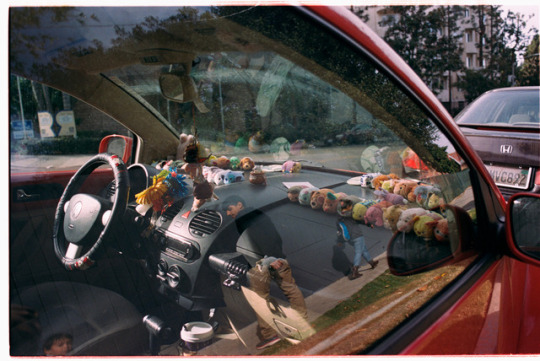
Nikon F3 | PC-Nikkor 28mm f/4 | Kodak Portra 400
#Kodak#Kodak Portra 400#Nikon#Nikon F3hp#Sean Klingelhoefer#Visual Journal#art photography#compact camera#daily photo#film scans#i shoot film#minolta elite 5400#visual diary#original photographers#photographers on tumblr#artists on tumblr#art photo#street photo#tumblr photographers#analog photography#collections#human habits#parked#parked cars#PC-Nikkor#28mm f/4 PC
21 notes
·
View notes
Photo
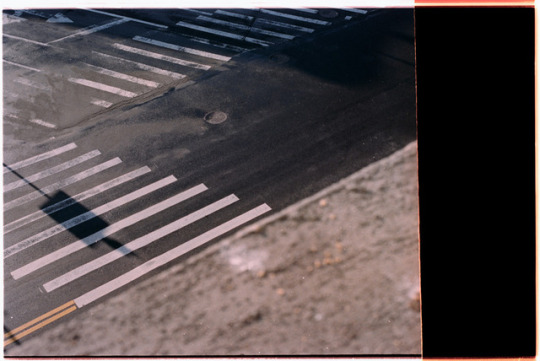
Nikon F3 | PC-Nikkor 28mm f/4 | Kodak Portra 400
#Kodak#Kodak Portra 400#Nikon#Nikon F3hp#Sean Klingelhoefer#Visual Journal#art photography#compact camera#daily photo#film scans#i shoot film#minolta elite 5400#visual diary#original photographers#photographers on tumblr#artists on tumblr#art photo#street photo#tumblr photographers#analog photography#crosswalk#zebra crossing#bushwick#bird poop
17 notes
·
View notes
Photo

Nikon F3 | PC-Nikkor 28mm f/4 | Kodak Portra 400
#Kodak#Kodak Portra 400#Nikon#Nikon F3hp#Sean Klingelhoefer#Visual Journal#art photography#compact camera#daily photo#film scans#i shoot film#minolta elite 5400#visual diary#original photographers#photographers on tumblr#artists on tumblr#art photo#street photo#tumblr photographers#analog photography#PC-Nikkor#28mm f/4
15 notes
·
View notes
Photo
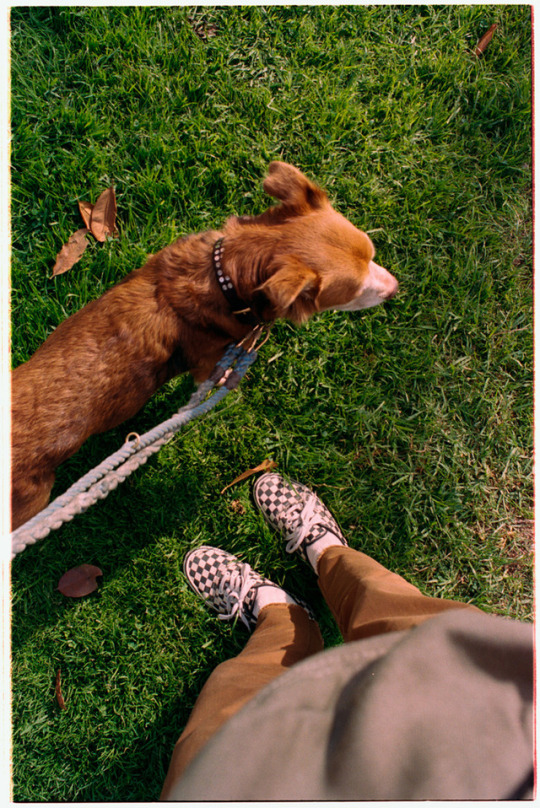
With Leon Koreatown, Los Angeles, CA 2017. Nikon F3 | PC-Nikkor 28mm f/4 | Kodak Portra 400
#Kodak#Kodak Portra 400#Nikon#Nikon F3hp#Sean Klingelhoefer#Visual Journal#art photography#compact camera#daily photo#film scans#i shoot film#minolta elite 5400#visual diary#original photographers#photographers on tumblr#artists on tumblr#art photo#street photo#tumblr photographers#analog photography#vans#off the wall#checkerboard#found my pet#leon the dog#leonitus#pitbull mix#mixed breed#end breed discrimination#PC-Nikkor
8 notes
·
View notes
Photo

Nikon F3 | PC-Nikkor 28mm f/4 | Kodak Portra 400
#Kodak#Kodak Portra 400#Nikon#Nikon F3hp#Sean Klingelhoefer#Visual Journal#art photography#compact camera#daily photo#film scans#i shoot film#minolta elite 5400#visual diary#original photographers#photographers on tumblr#artists on tumblr#art photo#street photo#tumblr photographers#analog photography#who am i#reflection
5 notes
·
View notes